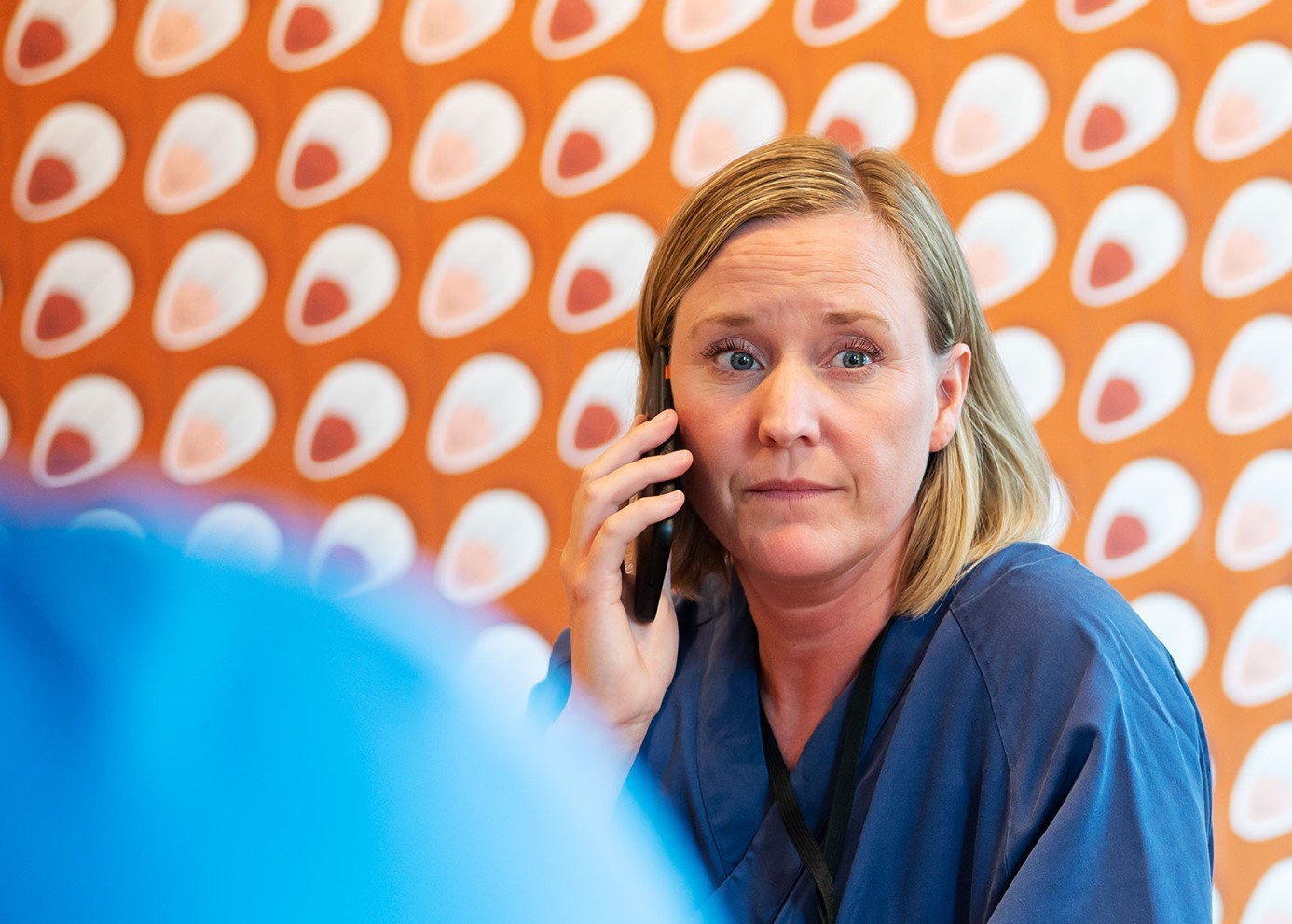This article reports on the findings from a study which looked at the acceptability and usability of this intervention by the nurses and patients.

Hege Wathne has published her second article from her PhD. On this article she has worked with Professors Carl May, Ingvild Margreta Morken, Marianne Storm, and Anne Marie Lunde Husebø to complete this research. This publication follows her first article and is related to the second stage of the eHealth@H2H main project, which included evaluating the feasibility of the remote patient monitoring intervention.
The eHealth @Hospital -2- Home research project modelled a nurse assisted remote patient monitoring digital health intervention. The purpose of this intervention is to offer a supportive transition for people with long-term illnesses (heart failure and colorectal cancers) following a hospital admission. This article reports on the findings from Hege’s PhD study which looked at the acceptability and usability of this intervention by the nurses and patients.
To better understand patients and nurses’ experiences of participation in the remote patient monitoring intervention Hege both observed patients during their intervention training as well as interviewing patients and the nurse’s following completion of the feasibility study. She wrote in the article that it appears like the nurse assisted remote patient monitoring digital health intervention was usable and acceptable to both patients and the nurses. Hege reported that the key feature that facilitated the usability and acceptance of this digital intervention was the “nurse assisted” component. Through digitally driven social interactions (text messages and phone calls) the intervention become a normal part of their lives and illness management strategies.
This observation came by using a theory called “normalisation process theory”. Both patients and nurses developed an understanding of the intervention and how to navigate the digital interface (coherence). On this foundation nurse and patients’ relationship developed further as roles were defined and features of the intervention were used (cognitive participation). The interventions’ ability to facilitate direct communication between patients and nurses appeared key to working together to improve patients’ chronic illness management (collective action). Finally, both patients and nurses in appraising the intervention agreed that the digital relationship formed through the intervention was valuable and mutually beneficial (reflexive monitoring).
To read more about this paper, you can access it for free using this link.

This paper is classed as a feasibility study which evaluates critical aspects of a project to determine the probability of completing it successfully. Such studies may be conducted with flexible methodology and typically focus on a process in which the study procedures and intervention can be adapted as necessary during the study to achieve the most promising outcomes. The overarching question that should guide a feasibility study is ‘can it work?’.
To determine whether the remote patient monitoring intervention was acceptable and usable to the users, Hege conducted an inductive deductive analysis of the data. Throughout the analysis, she worked ‘upwards’ in an inductive process, while simultaneously working ‘downwards’ and deductively by comparing the data from a theoretical perspective. In this study, Normalization Process Theory provided a framework for comparing data and other existing theories. Using Normalization Process Theory helped connect the concepts of acceptability and usability by examining the processes that enabled and hindered the adoption of the remote patient monitoring intervention. Understanding these processes is key for successful implementation because it ensures that the technology meets both clinical needs and integrates with users’ everyday lives and workflows.
Leading on from the results of Hege’s first study and paper, the eHealth@H2H team adapted the remote patient monitoring intervention’s functionalities and content to fit both patient populations. The results of both studies helped to determine and confirm communication methods between patients and nurse navigators.
What is next for your research?
It appears that both nurses and patients found the intervention usable and acceptable. While there were some suggestions on how technical aspects of the application could be improved and a desire for the intervention to be provided over a longer time period. The nurse assisted remote patient monitoring digital health intervention was seen as valuable by both patients and users. For Hege, she has submitted her PhD thesis, and her third paper related to her research. The final paper which is under review explores patients and nurse navigators’ experiences with receiving and providing digital self-management support while participating in a nurse-assisted RPM intervention. Make sure you follow team (links below) so you don’t miss the update to Hege’s PhD research results.
What are the next steps for this line of research/inquiry?
The intervention was tweaked a little bit for the subsequent randomised control trial, with the biggest change being to increase the intervention period from 4 weeks to 6 weeks in line with patients request. The trial is over 50% recruited with the colorectal cancer sample having completed recruitment.
For more:
Protocols:
Literature Reviews:
Intervention design:
Follow us:
Keep up to date with the project and its developments, follow us on LinkedIn og X (formerly Twitter).